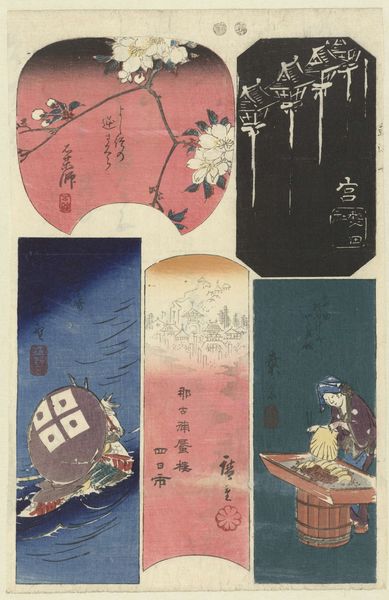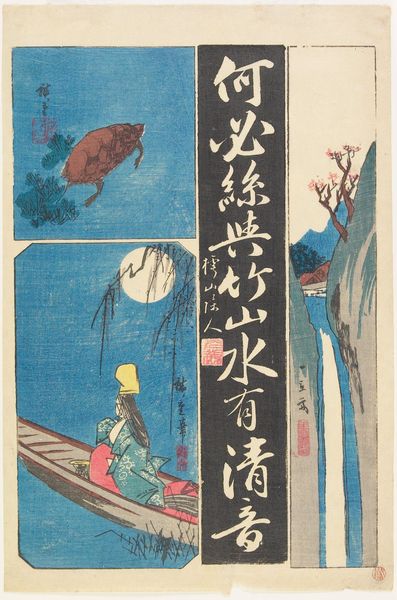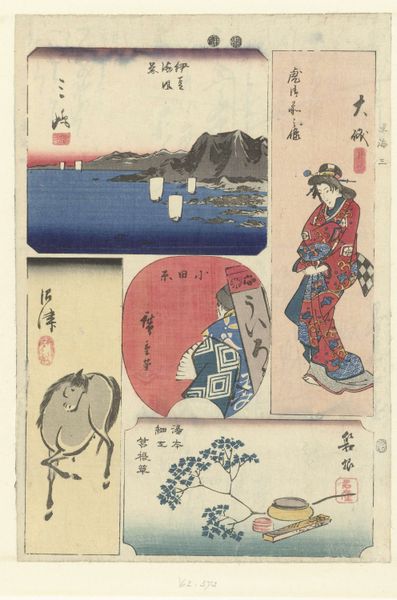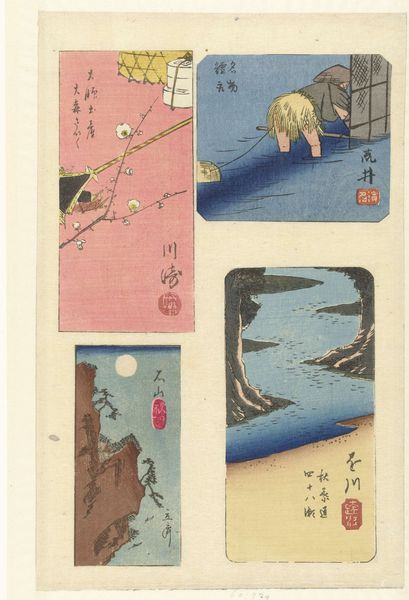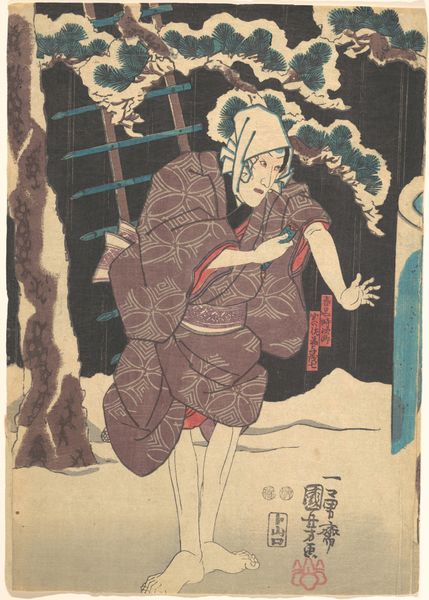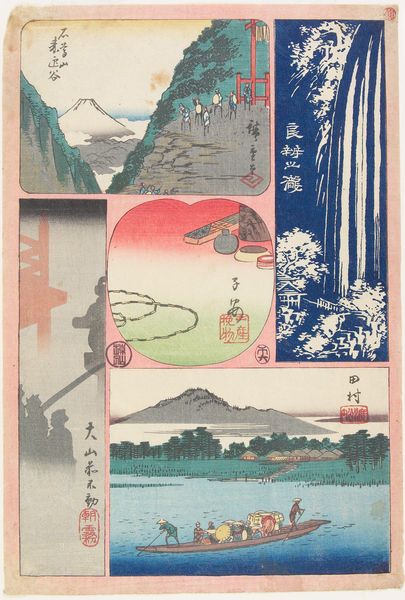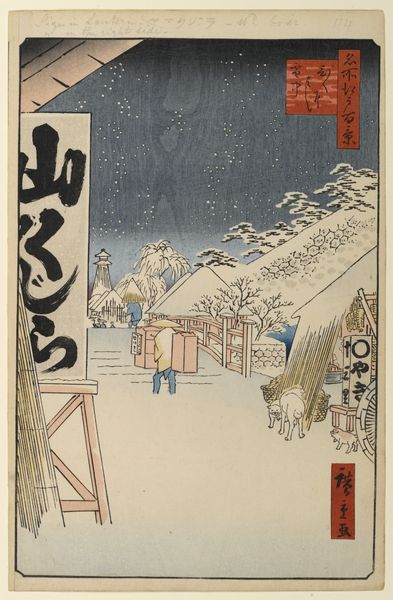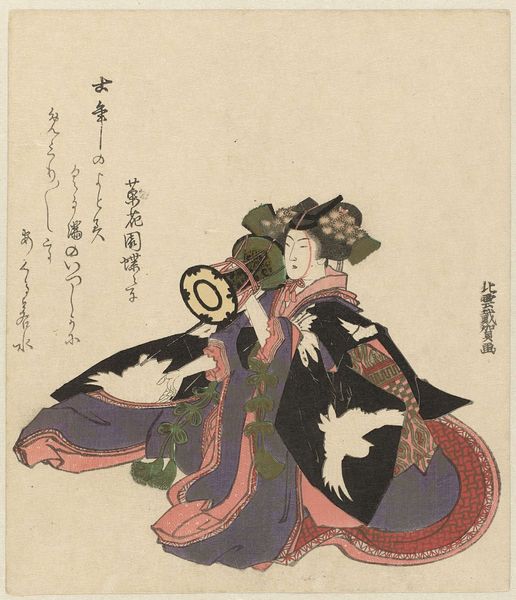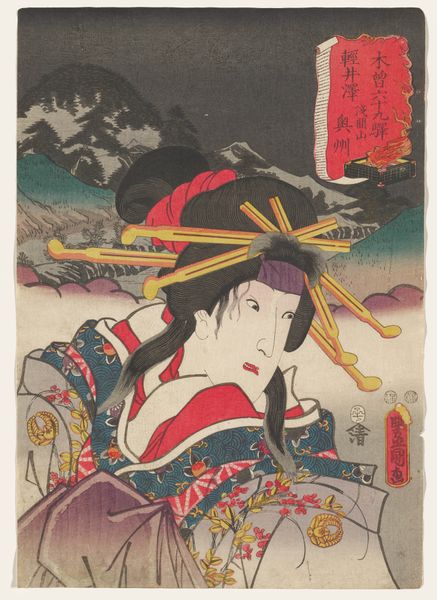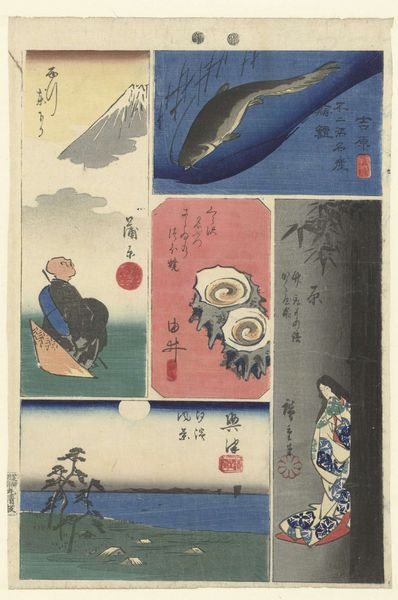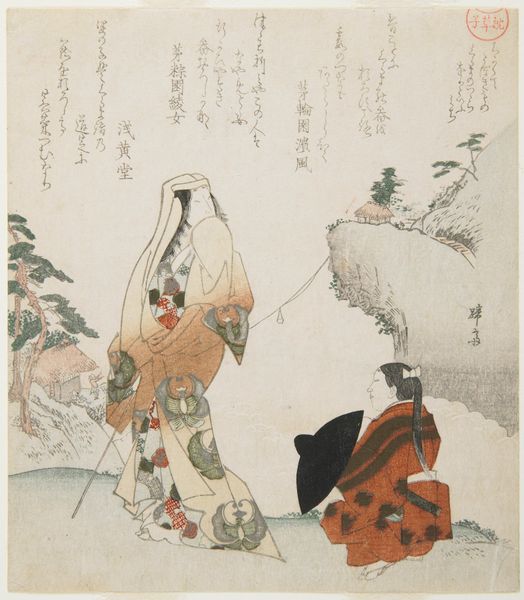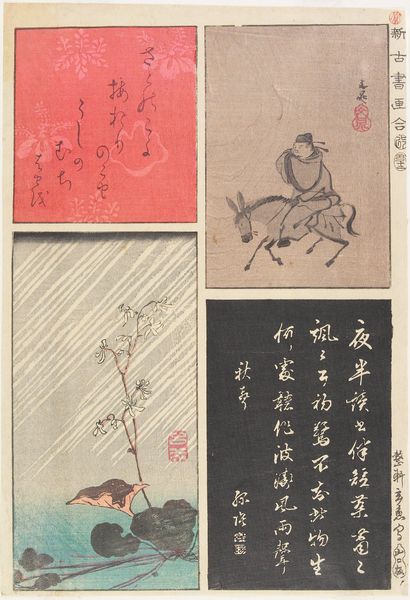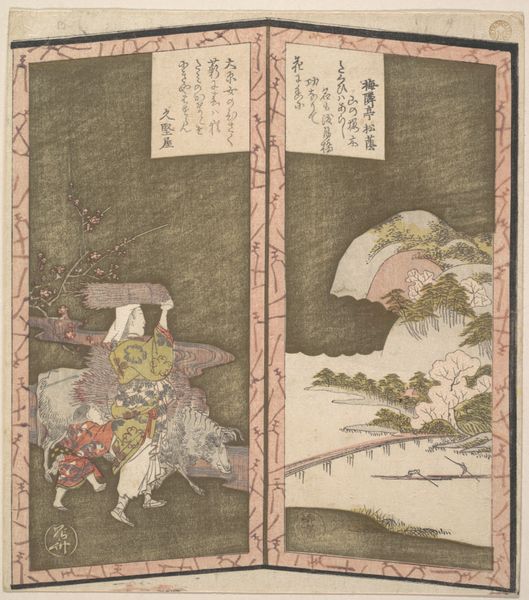
Dimensions: height 364 mm, width 243 mm
Copyright: Rijks Museum: Open Domain
Curator: Utagawa Hiroshige's "Nummer negen van de Tokaido," crafted around 1849-1850, certainly presents a fascinating tableau. My immediate impression is that of fragmented serenity—each section offers a snapshot of tranquil beauty, yet the overall composition feels strangely disjointed. Editor: Indeed. This print, residing here at the Rijksmuseum, demonstrates Hiroshige's Ukiyo-e mastery through its composition. Note how he strategically utilizes framing, not merely as division, but as a compositional tool directing our attention to separate visual fields. This print deftly combines different moments or impressions of travel along this historic route. Curator: I am particularly drawn to the segment showcasing a figure playing a stringed instrument. The surrounding foliage seems to dance in response to the melody. This invokes a feeling of isolation, perhaps representing the lone traveler’s introspection along the ancient highway. But I feel somewhat at arm's length emotionally. Editor: Yes, but let's also contextualize Ukiyo-e within the burgeoning merchant class of the Edo period. Art catered to their increasing cultural appetites—prints became souvenirs, reflecting societal values, depicting nature, actors, courtesans and famous landmarks—making culture and knowledge accessible to those who could not access classical artistic and literary canon. This imagery reinforced identity and status through the depiction of desirable leisure activities. Curator: While I can appreciate the print's role in representing broader socio-cultural phenomena, the effectiveness lies in its exquisite use of color and line. Consider how he renders snow in the bottom-right panel. Note the varying grey gradients which generate volume and the dynamism created by asymmetry. Editor: Certainly the artist’s manipulation of negative space contributes meaningfully to our perceptual encounter with the work. I see in the use of vertical vs horizontal, a pictorial mapping, rendering visible the way that art and commerce can coincide within a set of socio-political constraints and the increasing democratisation of art viewing. Curator: Ultimately, examining Hiroshige's work through either lens reveals valuable insights into both his artistic vision and the historical context that shaped it. Editor: Indeed. Whether studying his application of formalism or focusing on Ukiyo-e's cultural relevance, "Nummer negen van de Tokaido" presents a complex portrait of Japan's fascinating Edo era.
Comments
No comments
Be the first to comment and join the conversation on the ultimate creative platform.
